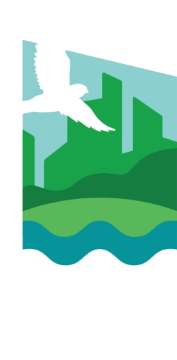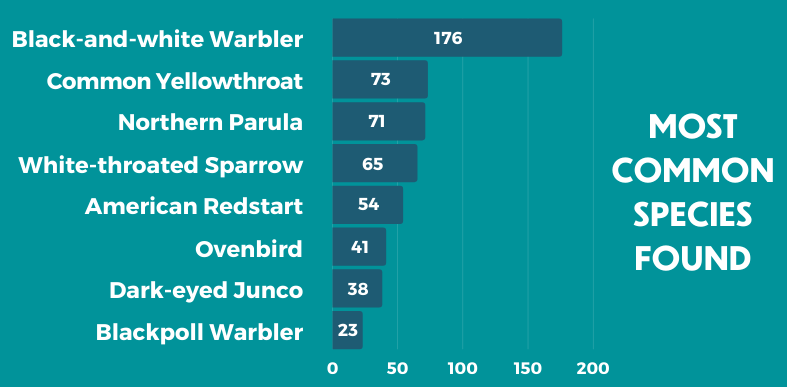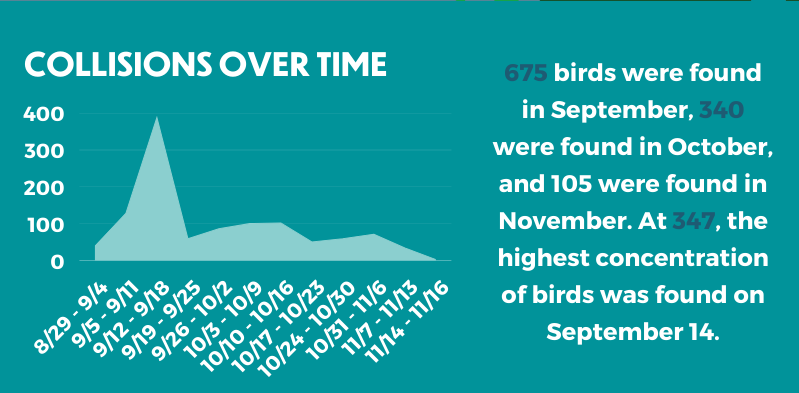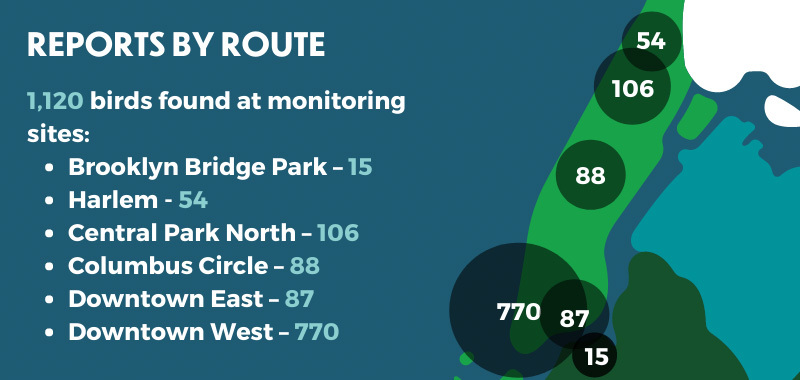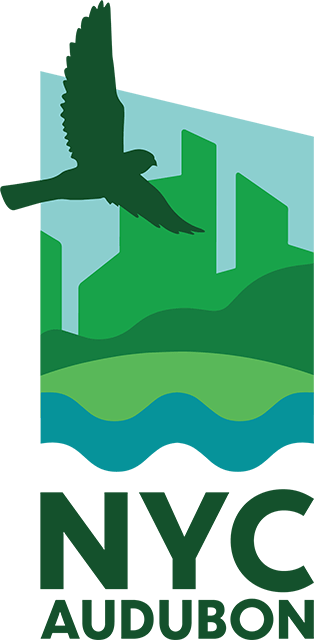Project Safe Flight Unwrapped: Fall 2021
category: VOLUNTEER!CONSERVATION
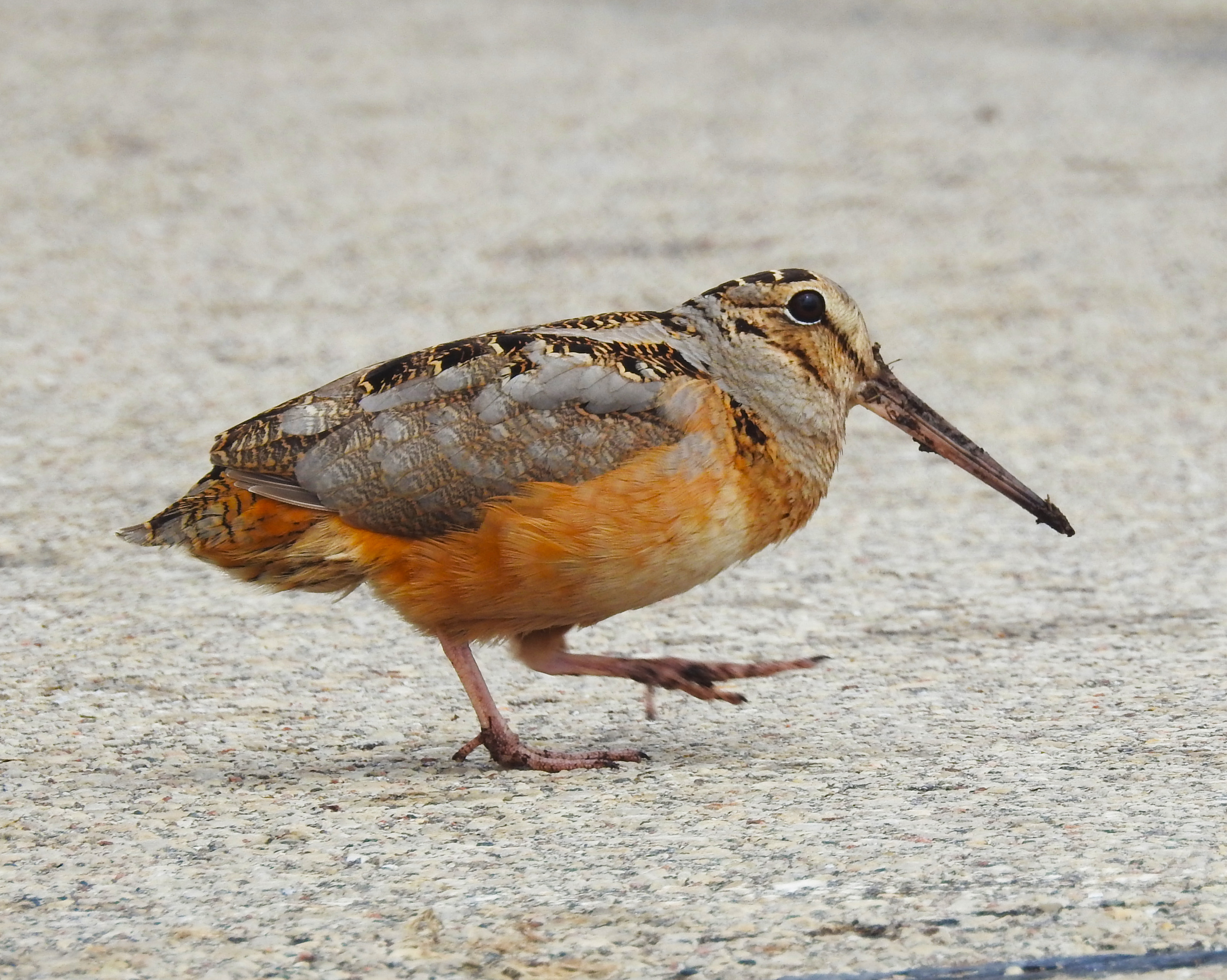
Four American Woodcocks were found by Project Safe Flight volunteers in fall 2021. Photo: Teri Shors/Audubon Photography Awards
Aurora Crooks | January 17, 2022
The fall of 2021 marked the 25th year of Project Safe Flight, New York City Audubon’s signature community science research effort studying bird collisions and buildings across New York City. This community science project is almost entirely driven by volunteers, with collision monitors waking up at the crack of dawn from the start of September through early November in the fall and the start of April through early June in the spring to monitor select routes in our city for dead and injured birds that have collided with buildings. In addition to meticulously collecting data on the birds they find, these dedicated volunteers rescue living collision victims when needed and preserve the dead collision victims for further study of the effects of head-on collisions. From our Project Safe Flight research, we estimate between 90,000 to 230,000 birds collide with buildings each year in our city alone.
Aurora Crooks | January 17, 2022
The fall of 2021 marked the 25th year of Project Safe Flight, New York City Audubon’s signature community science research effort studying bird collisions and buildings across New York City. This community science project is almost entirely driven by volunteers, with collision monitors waking up at the crack of dawn from the start of September through early November in the fall and the start of April through early June in the spring to monitor select routes in our city for dead and injured birds that have collided with buildings. In addition to meticulously collecting data on the birds they find, these dedicated volunteers rescue living collision victims when needed and preserve the dead collision victims for further study of the effects of head-on collisions. From our Project Safe Flight research, we estimate between 90,000 to 230,000 birds collide with buildings each year in our city alone.
The data that volunteers collect is crucial to our urban bird conservation and advocacy efforts: our research most recently inspired the New York City Council to introduce and unanimously pass Intros 271 and 274, two Lights Out NYC bills that will help protect migratory birds from deadly collisions with buildings. Project Safe Flight data also helped spur the City Council to pass the Bird Friendly Materials bill, legislation that went into effect last year which requires all new buildings and significant renovations to use bird-safe glass and materials.
New York City Audubon continues to use Project Safe Flight findings and crowdsourced collision reports through dBird.org to not only guide our decisions on where to monitor in future migration seasons, but also to inform our policy research as we delve deeper in our advocacy for bird-friendly building policies to protect our migratory birds.
This fall, a diverse and dedicated team of 37 volunteers, 20 of which were returning and 17 of which were new, found 62 unique species during migration while monitoring 7 routes throughout New York City. Over the 9 weeks of migration, we counted a total of 1,120 Birds, with 850 being dead, 207 being injured, and 63 with a condition that was left unreported.
Compared to last fall, we saw a 178% increase in the amount of birds reported having collided into buildings, and a 7% decrease in the number of species, leaving for a margin of error of ±2%. This is in comparison to the fall migration season of 2020, where we found 403 birds total, and witnessed 67 unique species during migration. In a year’s time, we’ve found nearly triple the amount of birds in comparison to last year’s fall migration, making this the highest number of birds that have ever been recovered in a single season of Project Safe Flight over the quarter-century of the study.
We will continue our research and mitigation efforts in ensuring buildings in New York City are retrofitted for bird safety while furthering look into the most dangerous buildings for migrating birds. As such, we are always eager to welcome new volunteers into our efforts. To get involved in the spring season of Project Safe Flight, check our website in mid-to-late February for upcoming community science orientations.
Even if you don’t volunteer for Project Safe Flight, you can still contribute to our data by reporting dead and injured birds you find at any time and place to our crowd-sourced bird collision database at https://dbird.org. It only takes a minute to record a collision with dBird on your phone. For ways to make your building bird-friendly, please visit American Bird Conservancy’s Glass Collisions website.
Even if you don’t volunteer for Project Safe Flight, you can still contribute to our data by reporting dead and injured birds you find at any time and place to our crowd-sourced bird collision database at https://dbird.org. It only takes a minute to record a collision with dBird on your phone. For ways to make your building bird-friendly, please visit American Bird Conservancy’s Glass Collisions website.
-Aurora Crooks, Community Science Programs Manager
Species Counted:
Alder Flycatcher (1)
American Redstart (54)
American Robin (3)
American Woodcock (4)
Bay-breasted Warbler (5)
Black-and-white Warbler (176)
Black-throated Blue Warbler (22)
Black-throated Green Warbler (13)
Blackburnian Warbler (6)
Blackpoll Warbler (23)
Blue Grosbeak (1)
Blue-headed Vireo (1)
Brown Creeper (10)
Canada Warbler (4)
Cape May Warbler (4)
Carolina Wren (1)
Gray Catbird (3)
Cedar Waxwing (4)
Chestnut-sided Warbler (8)
Chipping Sparrow (2)
Common Yellowthroat (73)
Dark-eyed Junco (39)
Eastern Towhee (1)
Fox Sparrow (3)
Golden-crowned Kinglet (17)
Gray Catbird (4)
Hermit Thrush (8)
Magnolia Warbler (19)
Marsh Wren (1)
Mourning Dove (2)
Mourning Warbler (1)
Nashville Warbler (4)
Northern Flicker (4)
Northern Parula (75)
Northern Waterthrush (9)
Oriole Sp. (1)
Ovenbird (47)
Palm Warbler (3)
Passerine sp. (1)
Rock Pigeon (2)
Pine Warbler (4)
Red-breasted Nuthatch (1)
Red-eyed Vireo (7)
Red-winged Blackbird (1)
Rose-breasted Grosbeak (1)
Ruby-crowned Kinglet (7)
Scarlet Tanager (2)
Song Sparrow (8)
Sparrow Sp. (13)
Swainson's Thrush (10)
Swamp Sparrow (7)
Tennessee Warbler (6)
Thrush Sp. (2)
Unknown Species (143)
Unreported Sp. (63)
Veery (2)
Warbler Sp. (75)
White-breasted Nuthatch (1)
White-throated Sparrow (65)
Winter Wren (5)
Wood Thrush (5)
Wren Sp. (1)
Yellow-rumped Warbler (7)
Yellow-bellied Sapsucker (7)
Yellow-billed Cuckoo (1)
Yellow-breasted Chat (1)
